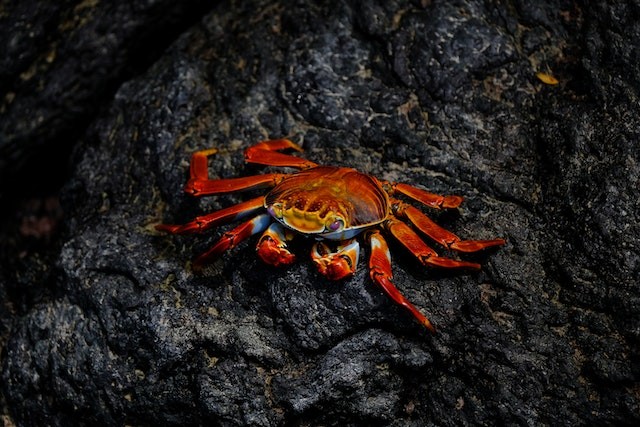
Crabs Have Evolved at Least 5 Times in 250 Million Years; Crabbiness Lost in Repeated Evolution
Crabs continue to evolve. According to a new report, they have undergone multiple evolutions in the past years, and it remains unclear why evolution keeps making crabs.
Repeated Evolution in Crabs
None of the bizarre and amazing species that have emerged from the complicated history of life's development on our planet have excited evolutionary biologists or divided taxonomists more than crabs.
The distinguishing characteristics of crabbiness have evolved at least five times in the previous 250 million years, according to experts who attempted to reconcile the evolutionary history of crabs in all their boisterous glory in a paper published in 2021, ScienceAlert reported.
Crabbiness has also likely been lost seven or more times. The recurring evolution of a body pattern resembling a crab has occurred so frequently that it has its name - carcinization. Another term is used when something loses its crabbiness due to evolution - decarcinization.
Raninidae, or frog crabs, are one peculiar example. Along the way to nearly legless Puerto Rican sand crabs (Emerita portoricensis) and other lop-sided hermit crabs, characteristics of the crab body plan were also lost; however, red king crabs later acquired those features again.
Although it's still unclear why evolution keeps creating species with crab-like body plans, it must be doing something right because it does so again.
Numerous crab species exist and are successful in practically every ecosystem on Earth, including coral reefs, abyssal plains, rivers, caves, and forests.
Additionally, crabs demonstrate an astonishing range of sizes. The pea crab (Pinnothera faba), which is the smallest, is only a few millimeters long, while the Japanese spider crab (Macrocheira kaempferi), which is the largest, measures about 4 meters (around 12 feet) from claw to claw.
Crabs are a perfect group to analyze patterns in biodiversity across time because of their abundance of species, a spectacular variety of body forms, and the rich fossil record. Finding some order in the crabs' confusion is a never-ending challenge.
ALSO READ: Western Diamondback Rattlesnake Facts: What Kind of Venom It Has and How Poisonous Is It?
What Are Crabs?
Crabs are crustaceans having a hard exoskeleton. The first two of their ten legs are not used for walking. They come in over 6,700 different species, according to A-Z Animals.
Crabs typically occur in aquatic habitats, including the ocean, freshwater streams, and land. Others spend their entire lives on the ground but are never far from water.
Because they maintain the environment clean, crabs are an extremely significant animal. They are also a crucial food source for various animals, including humans.
By clearing away the debris that may otherwise damage the reefs, crabs contribute to the survival of coral reefs. They have existed for more than 200 million years since the Jurassic period. They can swim, walk, and engage in combat over mates.
There are "True" crabs, including swimmer crabs and mud crabs. There are also "false crabs," like the king crabs with spike-covered bodies or the shy hermit crabs with spiraling abdomens.
True crabs have four pairs of skinny walking legs, whereas false crabs only have three, plus a little second pair at the back. It is the most obvious distinction between the two types of crabs.
RELATED ARTICLE: Record-Breaking Giant Squid Caught in Hawaii, Fisherman Says It Can Make About 100 Plates of Calamari
Check out more news and information on Animals in Science Times.

![Extinct Giant Salmon Had Tusk-Like Spikes Protruding Out of Its Snout That Can Easily Kill Shark, Other Large Marine Animals [Study]](https://1721181113.rsc.cdn77.org/data/thumbs/full/53304/89/56/50/40/extinct-giant-salmon-had-tusk-like-spikes-protruding-out-of-its-snout-that-can-easily-kill-shark-other-large-marine-animals-study.png)












